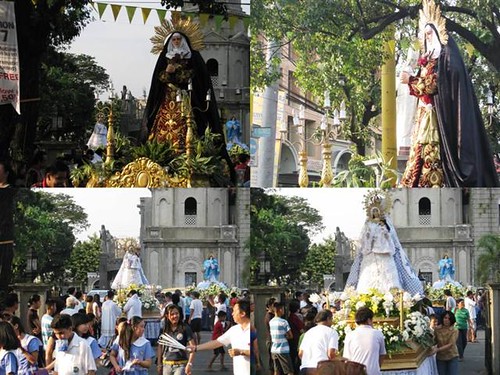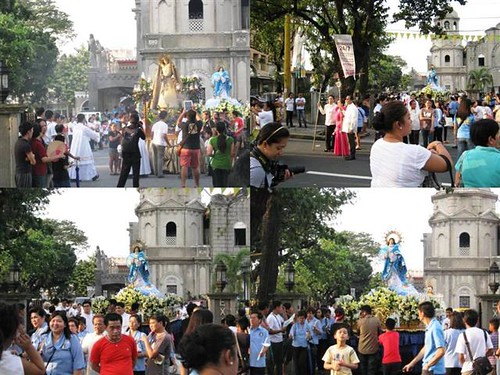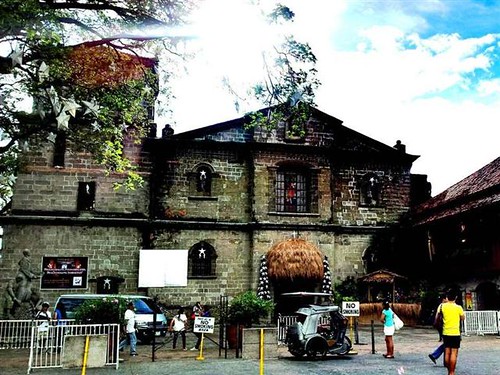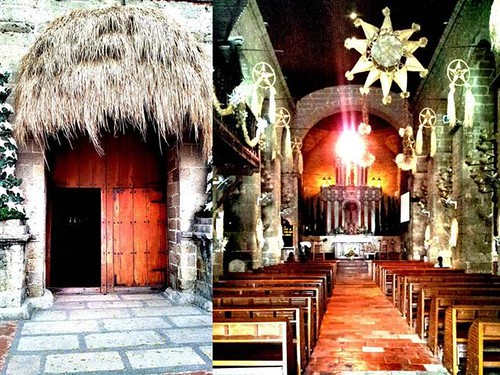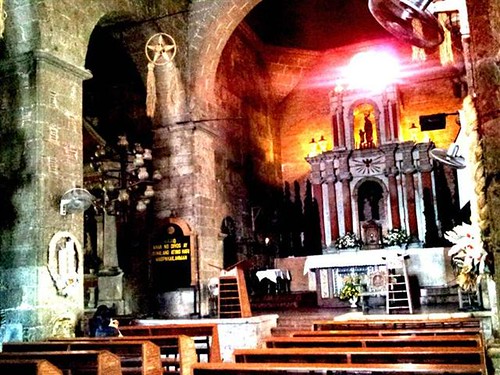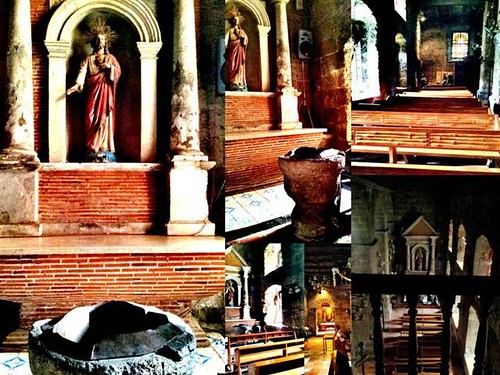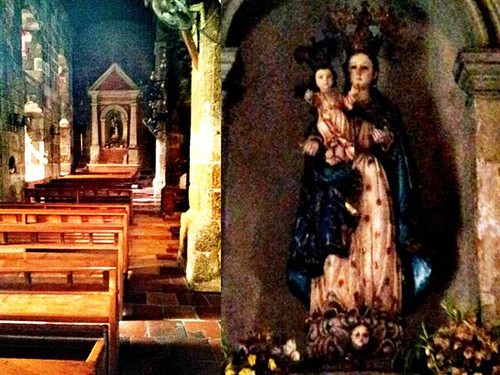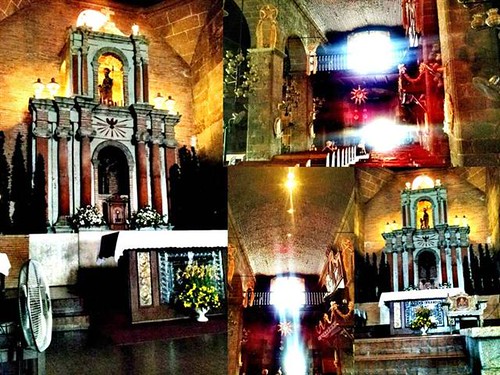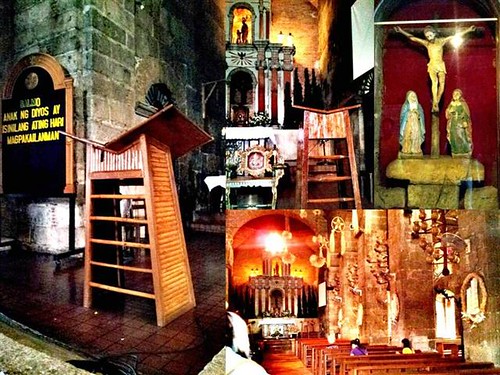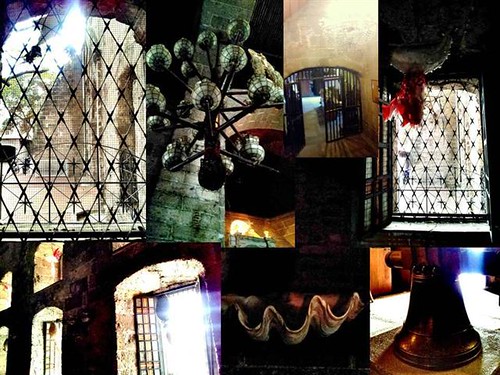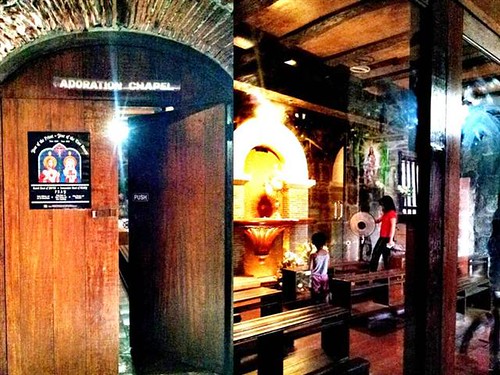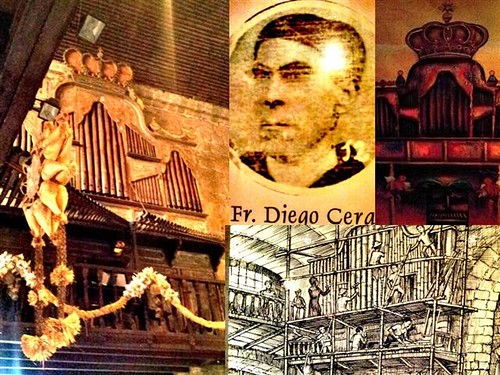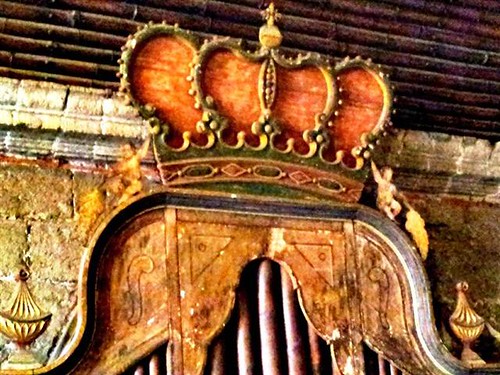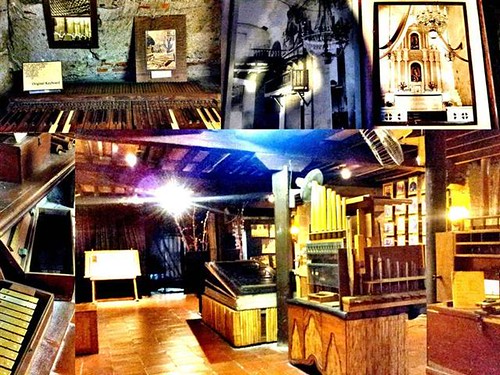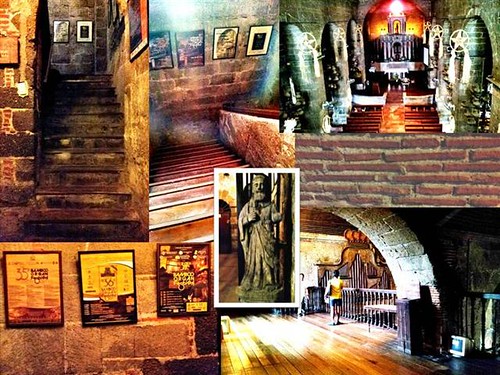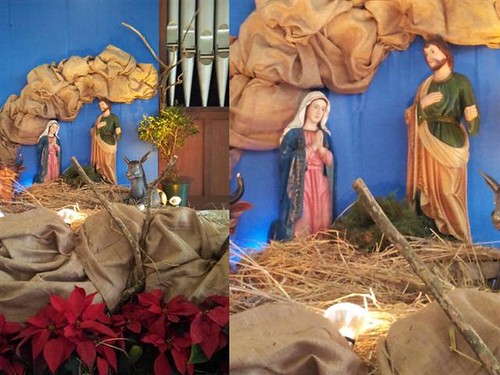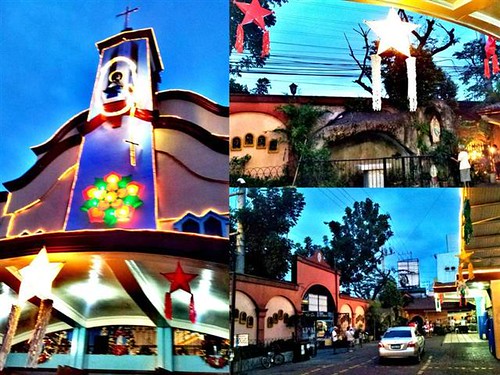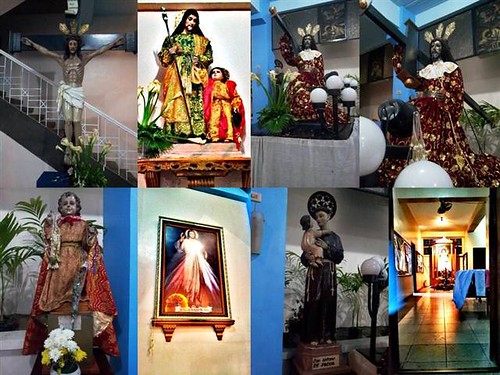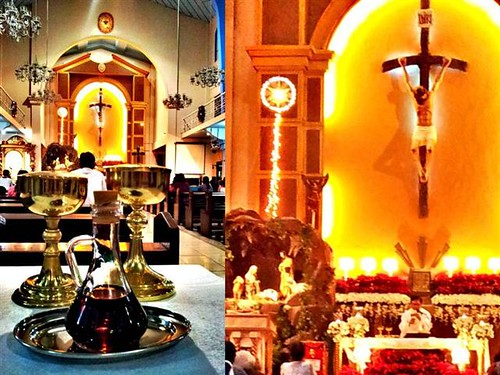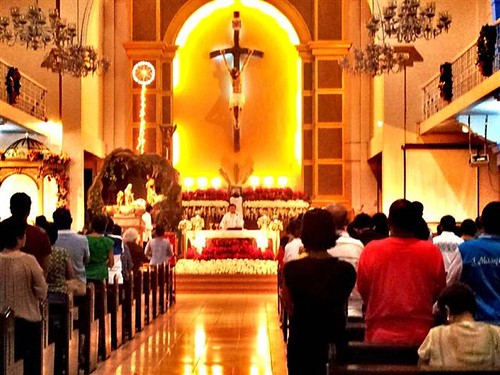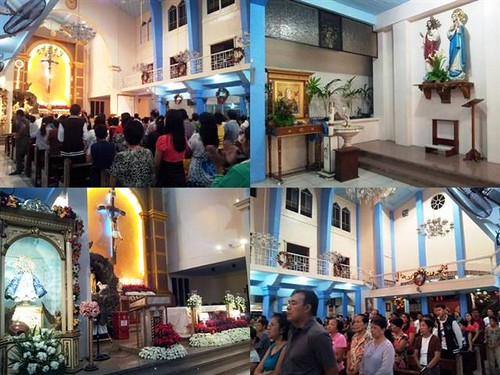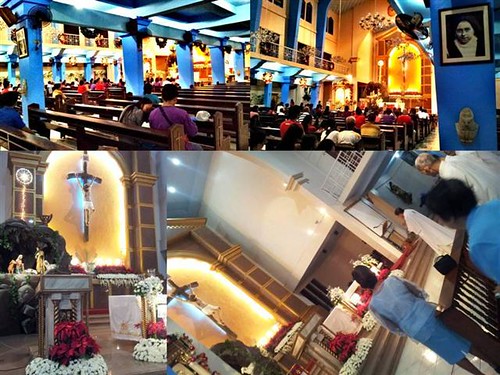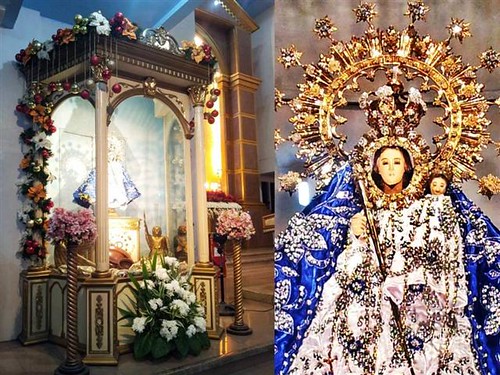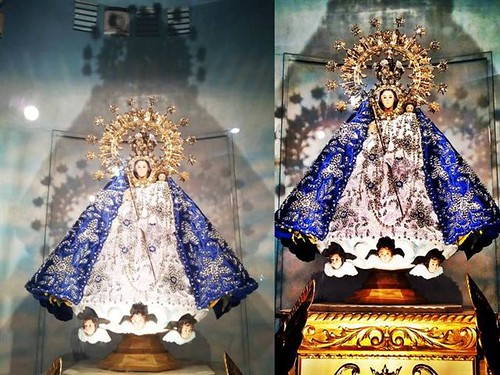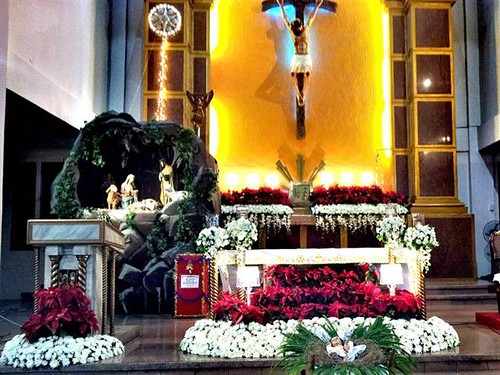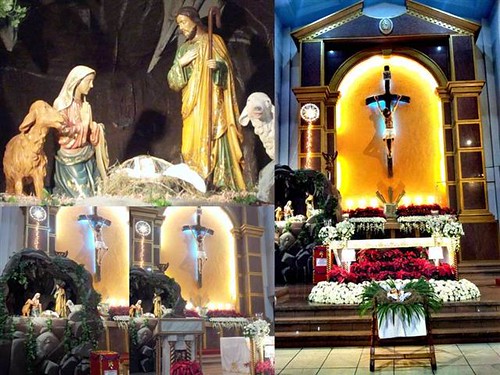O Virgin Immaculate, Mother of God and my Mother, from thy sublime height turn upon thine eyes of pity. Filled with confidence in thy goodness and knowing full well thy power, I beseech Thee to extend to me thine assistance in the journey of life, which is so full of dangers for my soul. And in order that I may never be the slave of the devil through sin, but may ever live with my heart humble and pure, I entrust myself wholly to thee. I consecrate my heart to thee forever, my only desire being to love thy Divine Son, Jesus. Mary, none of thy devout servants has ever perished; may I too be saved. Amen.
December 8, 2012- Images bearing the various titles of Mary, mother of God, gathered once again at the Shrine of Our Lady of the Abandoned in commemoration of the Feast of the Immaculate Conception, "Alay kay Maria."
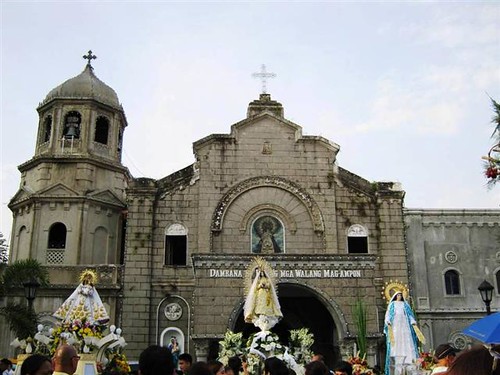
Around 3:00 pm, waiting for the procession to start, one by one the images arrive

O God, who by the Immaculate Conception
of the Blessed Virgin Mary,
did prepare a worthy dwelling place for Your Son,
we beseech You that, as by the foreseen death of this, Your Son, You did preserve Her from all stain,
so too You would permit us, purified through Her intercession, to come unto You.
Through the same Lord Jesus Christ, Your Son, who lives and reigns with You in the unity of the Holy Spirit,
God, world without end.
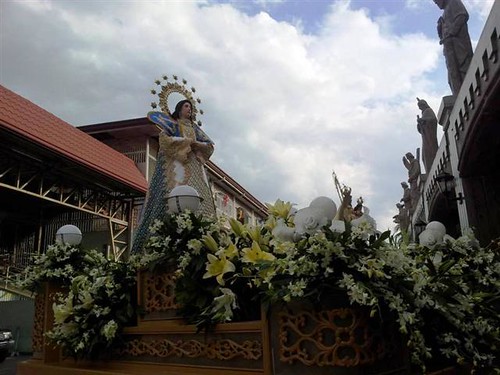 Our Lady of the Abandoned of Marikina
Our Lady of the Abandoned of Marikina

The Canonically Crowned image of Our Lady of the Abandoned of Marikina serenely waits for the start of the procession.

Most Holy and Immaculate Virgin, Help of Christians, we place ourselves under your
motherly protection. Throughout the Church's history you have helped Christians in
times of trial, temptation and danger. Time and time again, you have proven to be the
Refuge of Sinners, the Hope of the Hopeless, the Consoler of the Afflicted, and the
Comforter of the Dying. We promise to be faithful disciples of Jesus Christ, your Son,
to proclaim His Good News of God's love for all people, and to work for peace and
justice in our world. With faith in your intercession, we pray for the Church, for our
family and friends, for the poor and abandoned, and all the dying. Grant, O Mary,
Help of Christians, the graces in which we stand in need. (Mention your intentions)
May we serve Jesus with fidelity and love until death. Help us and out loved ones to
attain the boundless joy of being forever with our Father in heaven.
Amen.
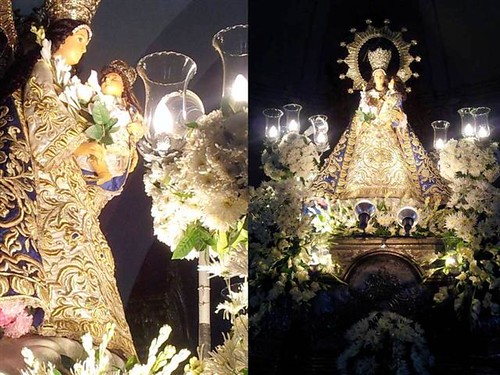 Checking out the Images joining the procession
Checking out the Images joining the procession
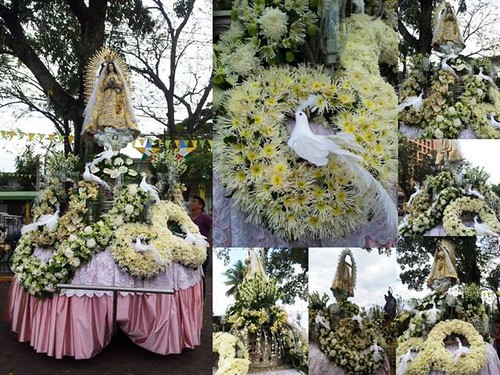
The most beautifully arranged carroza among the bunch, every side is a wonder to behold...although I feel the addition of the birds has become too passe.
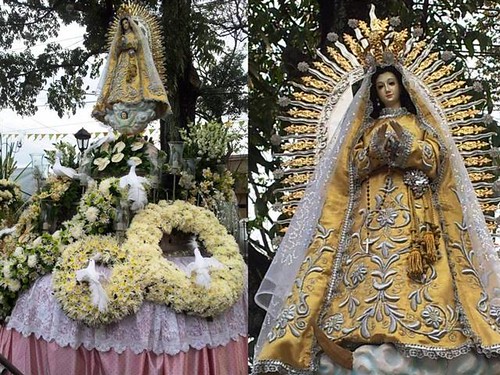
I am not sure what the title of the image is, it appears as Our Lady of Guadalupe with the rays at the back and the moon at its foot; but this can just be an image of the Immaculate Conception (plus she is wearing gold, a bit confusing in terms of iconography)...
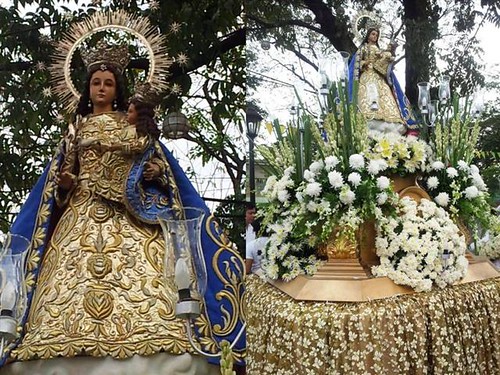
Another image of Our Lady of the Abandoned.
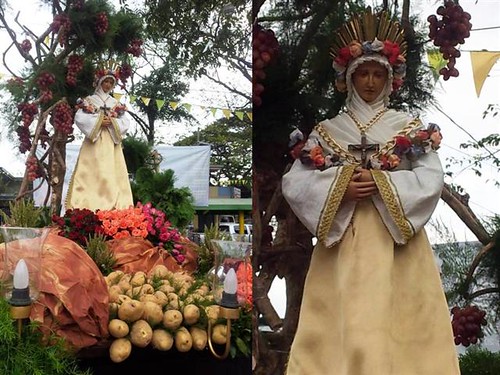
Our Lady of La Sallette, the carroza is decorated with symbols pertinent during her apparition...chains, potatoes and roses.
Remember, dear Lady of La Salette, true Mother of Sorrows, the tears which thou didst shed for me on Calvary; be mindful also of the unceasing care which thou dost exercise to shield me from the justice of God; and consider whether thou canst now abandon thy child, for whom thou hast done so much. Inspired by this consoling thought, I come to cast myself at thy feet, in spite of my infidelity and ingratitude. Reject not my prayer, O Virgin of reconciliation, convert me, obtain for me the grace to love Jesus Christ above all things and to console thee too by living a holy life, in order that one day I may be able to see thee in Heaven. Amen.
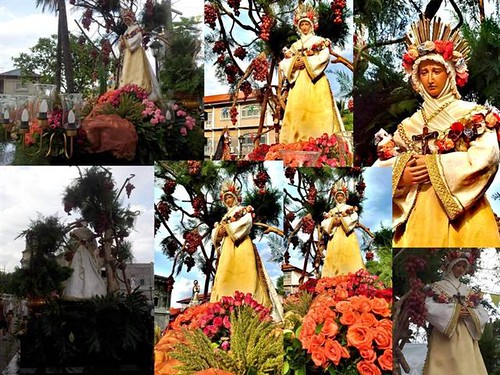 Our Lady of La Salette was seen by two children Melanie Mathieu and Maxim Giraud, in the small French village of La Sallette, located near Grenoble, on September 19, 1846. She first appeared emerging from a globe of light, weeping over our sins. Mary then stood before the children, as in the picture at right, and gave them a message to share with the world. She said “For how long a time do I suffer for you! If I would not have my Son abandon you, I am compelled to pray to him without ceasing; and as to you, you take not heed of it!”She continued that far too many people were offending our Lord with their impieties (such as working on Sundays instead of attending Mass) and general disrespect or indifference towards Him.(She bemoaned at one point those who swore while taking “the name of my Son in vain.” Isn’t it true nowadays as well that some people only say Christ’s name in anger when experiencing some misfortune?)
Our Lady of La Salette was seen by two children Melanie Mathieu and Maxim Giraud, in the small French village of La Sallette, located near Grenoble, on September 19, 1846. She first appeared emerging from a globe of light, weeping over our sins. Mary then stood before the children, as in the picture at right, and gave them a message to share with the world. She said “For how long a time do I suffer for you! If I would not have my Son abandon you, I am compelled to pray to him without ceasing; and as to you, you take not heed of it!”She continued that far too many people were offending our Lord with their impieties (such as working on Sundays instead of attending Mass) and general disrespect or indifference towards Him.(She bemoaned at one point those who swore while taking “the name of my Son in vain.” Isn’t it true nowadays as well that some people only say Christ’s name in anger when experiencing some misfortune?)
Our Lady of La Salette warned of chastisements that would fall upon humanity if people didn’t change their ways. And indeed, Europe experienced a terrible harvest in 1847 that led to widespread famine there. Before ascending into heaven she urged the children to pray more and gave each of them a secret that was revealed to Pope Pius IX in 1851 concerning threats to the church and to the world.In spite of her sober message, Our Blessed Mother meant for us to have hope in her Son’s Divine mercy, saying “if they are converted, the stones and rocks will change into mounds of wheat, and the potatoes will be self-sown in the land”, and many people soon made amends. (Taken from A Prayer to Our Lady of La Salette)

The beloved spouse of Mary, St. Joseph

Mater Dolorosa 1, there are quite a few Dolorosa's in attendance.

O most holy Virgin, Mother of our Lord Jesus Christ: by the overwhelming grief you experienced when you witnessed the martyrdom, the crucifixion, and death of your divine Son, look upon me with eyes of compassion, and awaken in my heart a tender commiseration for those sufferings, as well as a sincere detestation of my sins, in order that being disengaged from all undue affection for the passing joys of this earth, I may sigh after the eternal Jerusalem, and that henceforward all my thoughts and all my actions may be directed towards this one most desirable object. Honor, glory, and love to our divine Lord Jesus, and to the holy and immaculate Mother of God. Amen.
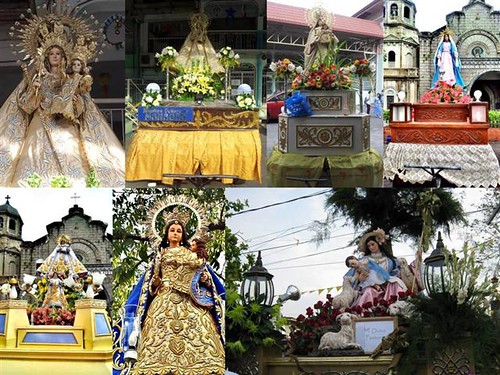
From Our Lady of the Rosary of Manaog to La Divina Pastora
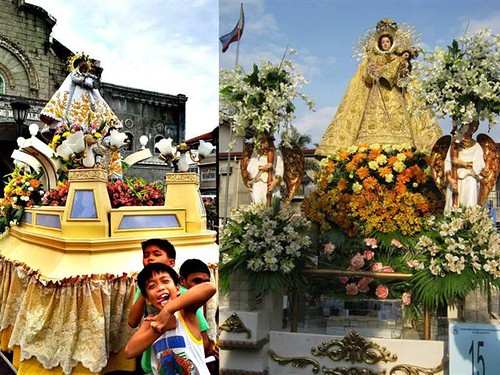
Kids enjoying the pageantry of the event

Mater Dolorosa 2

Mater Dolorosa 3 (also known as Angustia...but still is an image of the sorrowful mother)
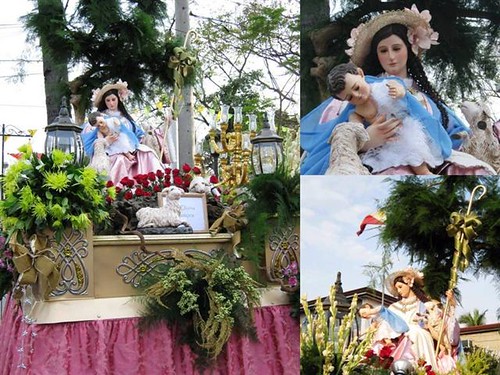
La Divina Pastora, a beautiful image seemingly in motion...
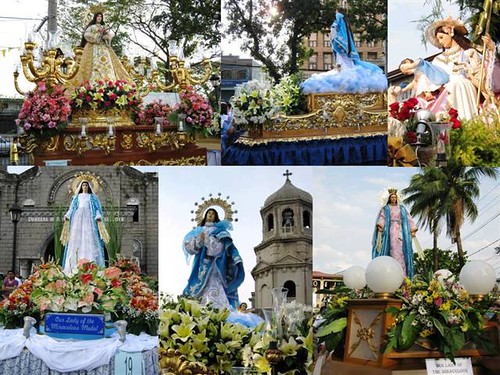
From being Immaculately conceived to Mother of God, co-redemptionist
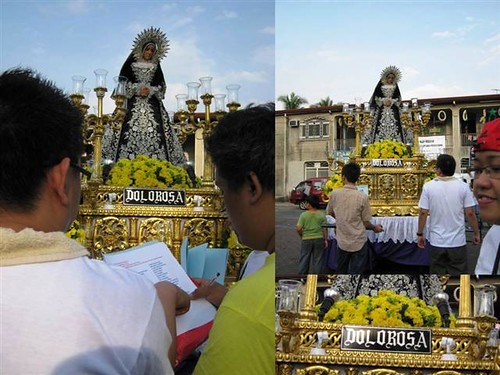
Mater Dolorosa 4, organizers busily checking if the image is on the list and where it should be parked to facilitate a smooth flow of carroza's come procession start.

Minutes before the procession, the student of MCS come out to participate in the procession.
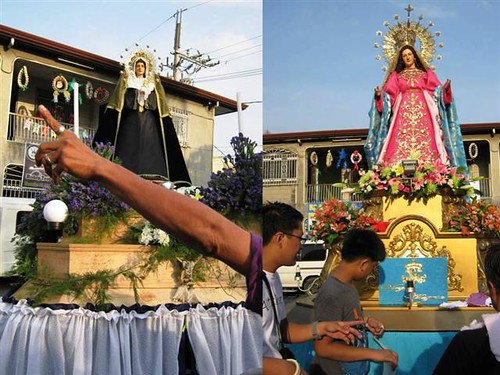
Last minute arrivals...Mater Dolorosa 5 and Virgen Alegria...two sides of Mary during Lent

As the images are slowly making its way out of the Shrine, one more image arrived, Mater Dolorosa 6.
Procession Starts


